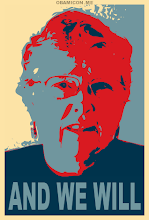Bonding Over a Mascot
By JOE LAPOINTE
Published: December 29, 2006
A few new statues of a Seminole family in 19th-century clothing stand outside the football stadium at Florida State University. The father holds a long gun, the son a bow and arrow, and the mother an infant in her arms as she looks warily to her right.
The statues represent the era when the Seminoles and the United States were at war. The public art is part of a complex relationship between Seminole culture and sports at Florida State. This bond has strengthened since a crackdown by the National Collegiate Athletic Association last year against American Indian mascots, nicknames and imagery among sports teams.
Not every university enjoys a harmonious relationship with Indians. But a sense of cooperation seems to permeate the Florida State campus in Tallahassee, Fla., where Toni Sanchez was among 21 students to complete a new course this month called History of the Seminoles and Southeastern Tribes.
Sanchez, a senior majoring in English, called the N.C.A.A. edict “beyond idiotic” and offensive. She described the new statues as beautiful.
“I know what a real Seminole is,” she said. “This Anglo guilt and regret don’t affect me.”
Sanchez is from a family with Seminole and Hispanic ancestry. Her father, once a farm worker, is now a casino operator. Her mother is a teacher. Sanchez also plays trumpet at football games in a marching band that wears arrowheads on the back of its uniforms.
Of the tribal flag near the new statues, another recent addition, she said, “Every time I look at it, I get really giddy inside.” Of the use of the Seminole imagery for the university’s sports, she said, “I’m so proud of it.”
Florida State was one of 18 institutions cited by the N.C.A.A. in August 2005 for “mascots, nicknames or images deemed hostile or abusive in terms of race, ethnicity or national origin.” The institutions were forbidden to use the symbols in postseason events controlled by the N.C.A.A., like the national championship basketball tournament that begins in March.
Five programs have since received permission to continue using their imagery because they received approval from specific Indian groups, in Florida State’s case the 3,200-member Seminole Tribe of Florida. Five others have changed or are in the process of changing, said Bob Williams, an N.C.A.A. spokesman. The other eight, he said, remain on the list and are subject to the policy, including the Illinois Fighting Illini and the North Dakota Fighting Sioux.
Myles Brand, the president of the N.C.A.A., said in a telephone interview last week that his organization made the right decision but witnessed more negative reaction to the ruling than expected.
“What we’ve accomplished in part is to raise the level of awareness nationally about how we treat Native Americans,” Brand said. “If we don’t stand by our values, we lose our integrity.”
At times, Indians are reduced to casual caricature that would not be tolerated by other groups, he said, adding that the N.C.A.A. had been honored for its stance by Indian groups in Oklahoma and Indiana.
Less complimentary is T. K. Wetherell, the president of Florida State, who said the N.C.A.A. was “more interested in being politically correct” and did not consult the Seminole tribe before making its decision.
“The way they weaseled out was to say, ‘O.K., as long as the tribe continues to support it,’ ” he said.
Wetherell, a former Florida State football player who also teaches history, wore a hunting outfit when interviewed recently in his office. He pointed to a team logo of an Indian’s face that he said had elements of caricature. “That’s not really a Seminole-looking deal,” Wetherell said. “This is a marketing tool.” He said the university might “gradually let certain things fade.”
He said he told the Seminole Tribe of Florida’s council, “If you don’t want Florida State to be the Seminoles, we ain’t Seminoles anymore.” Wetherell said the tribe approved the use partly because the campus is in the capital and tribal leaders “are not only good businessmen, they are great politicians.”
He said the new history course was proposed before the N.C.A.A. edict.
But Neil Jumonville, the chairman of the history department, said the N.C.A.A. resolution accelerated the creation of the class and that his staff received advice from local Seminole leaders.
“These are people who are savvy about their place in the American myth,” Jumonville said. “And they are smart enough to manipulate the myth for their own good.”
The first class was taught by Christopher R. Versen, who recently earned his doctorate in American history.
“I wanted to challenge students to think about identity,” Versen said. “What is it inside us that makes us identify ourselves one way or another? What external factors play into identity?”


Links to this post:
Create a Link
<< Home